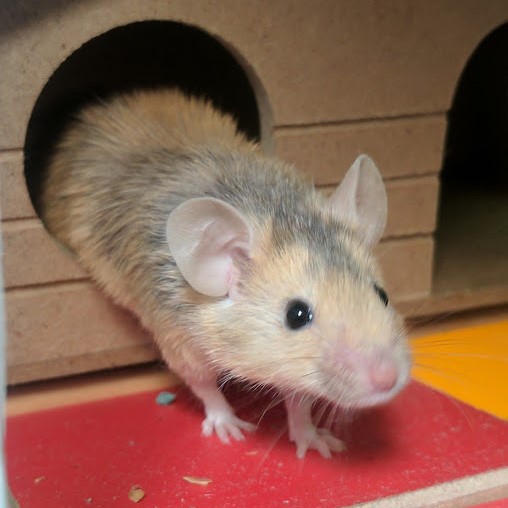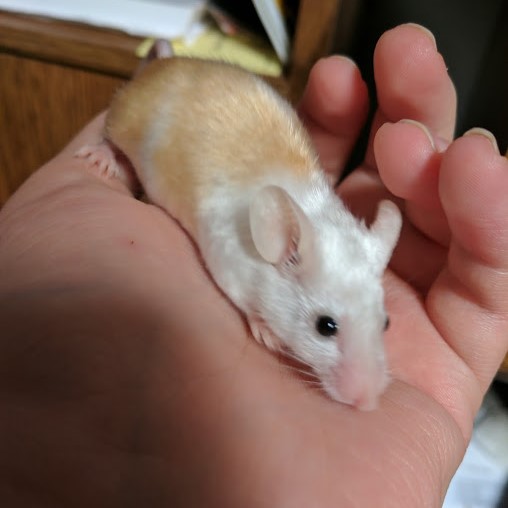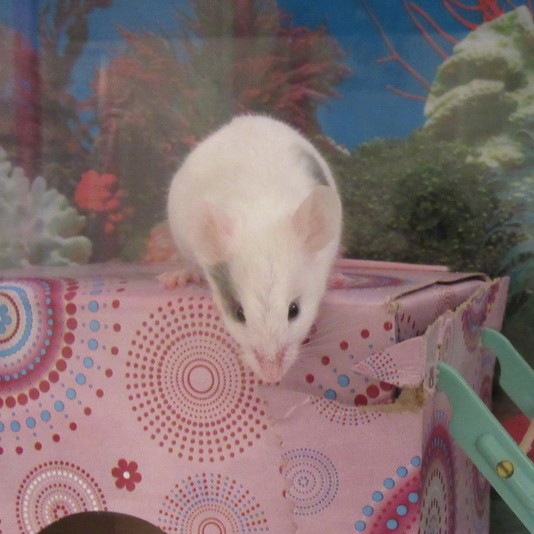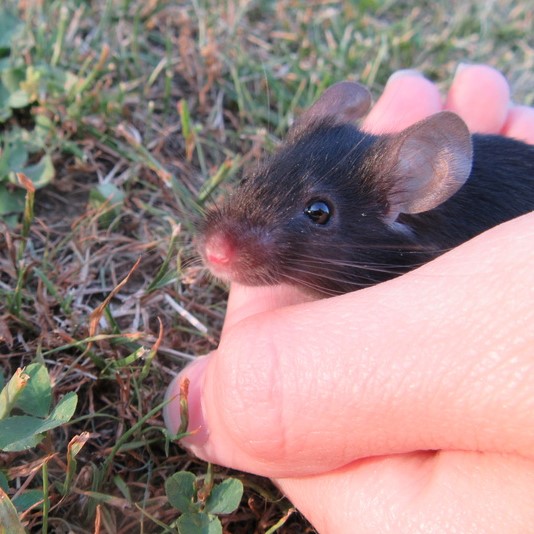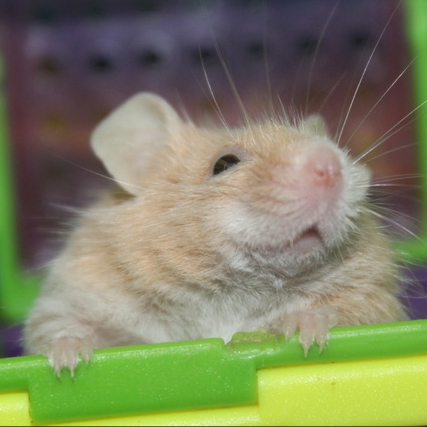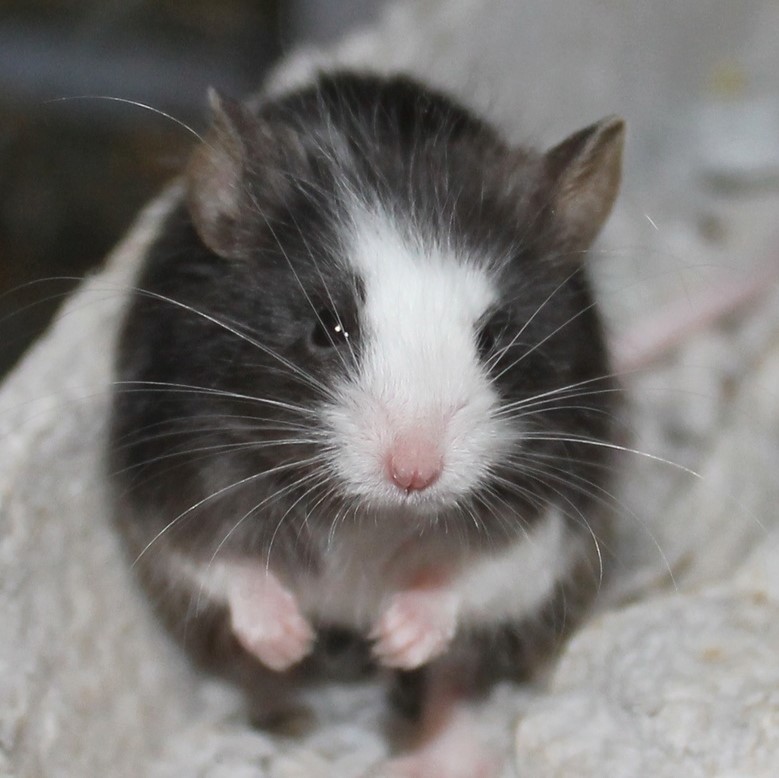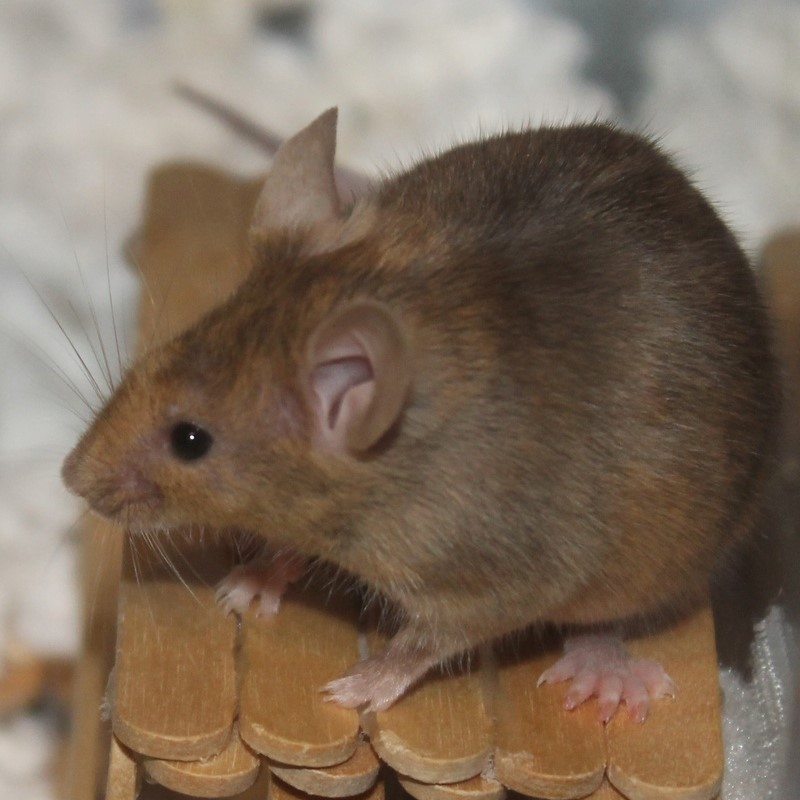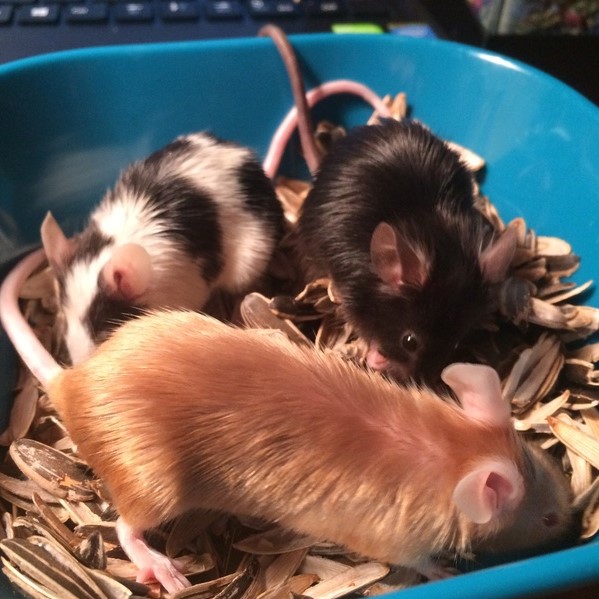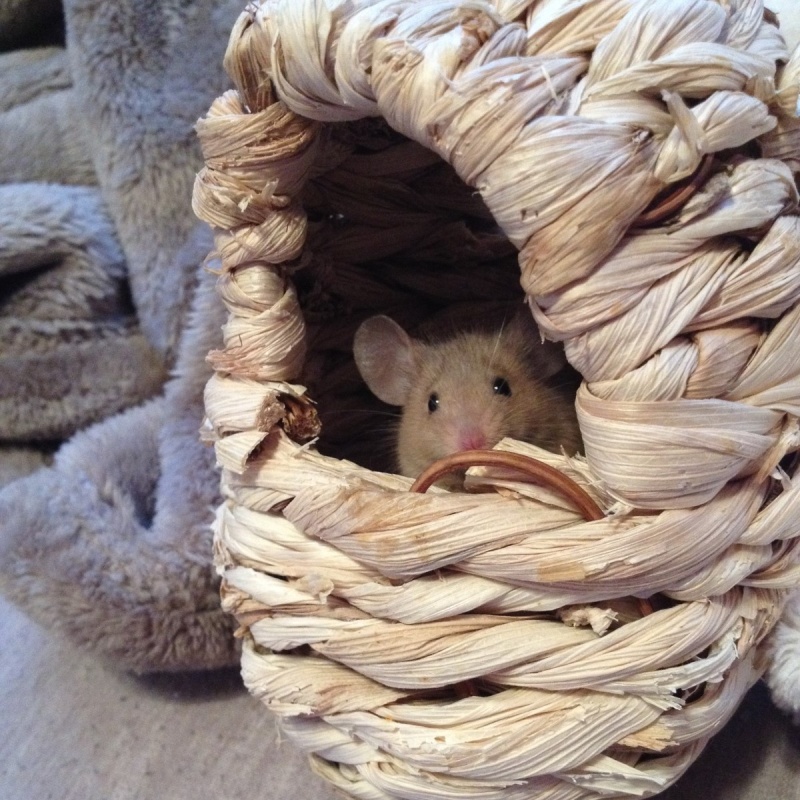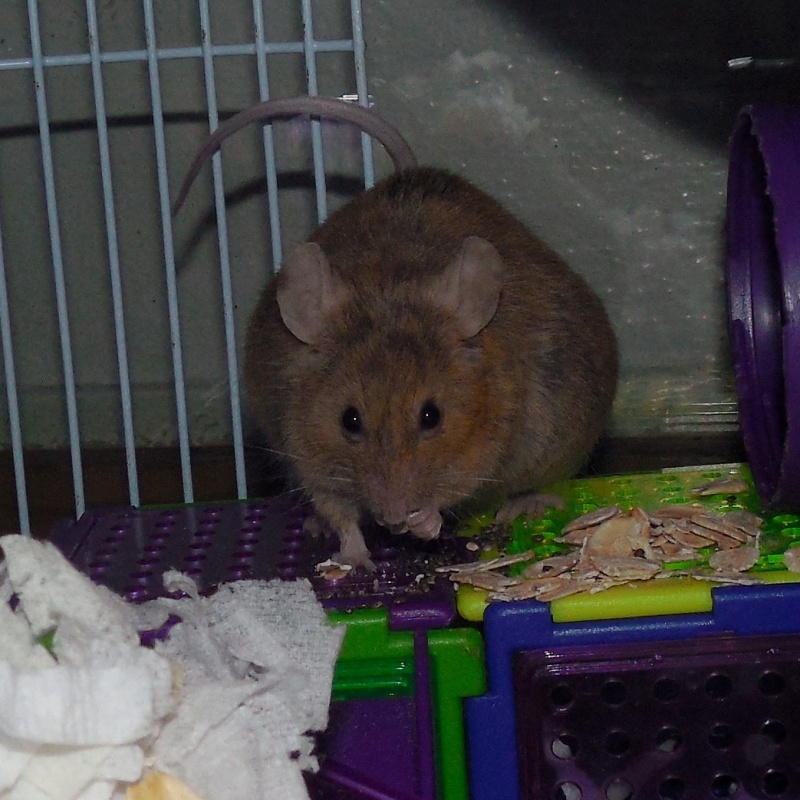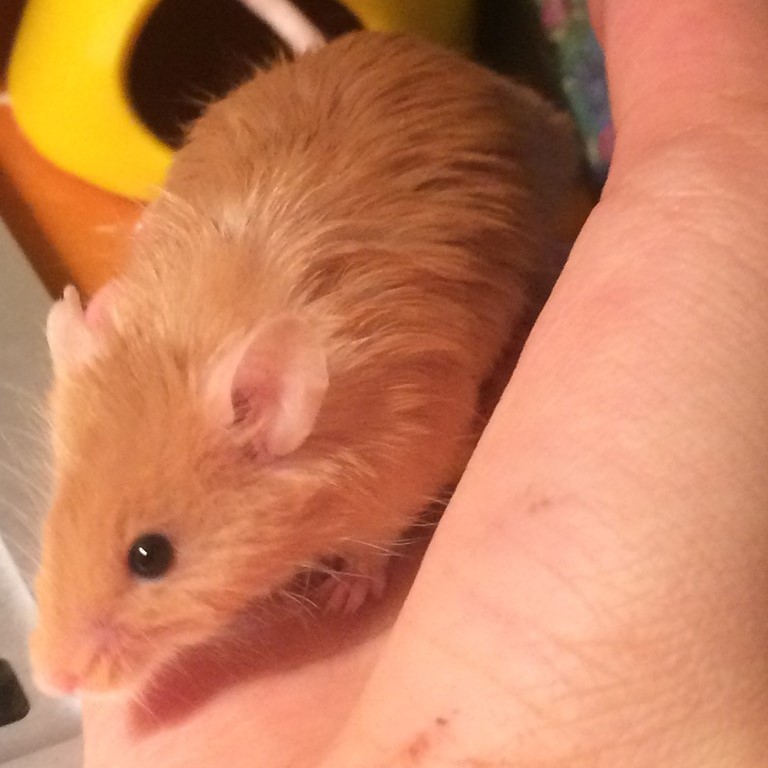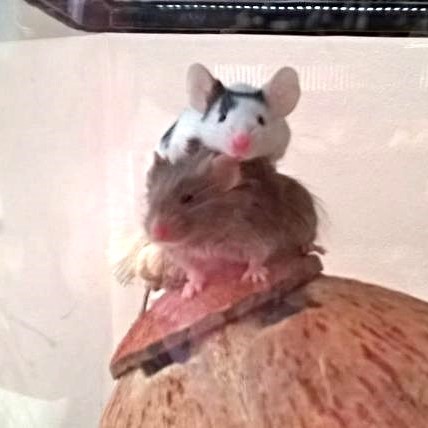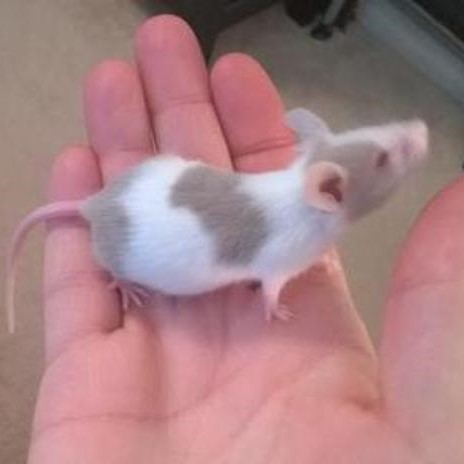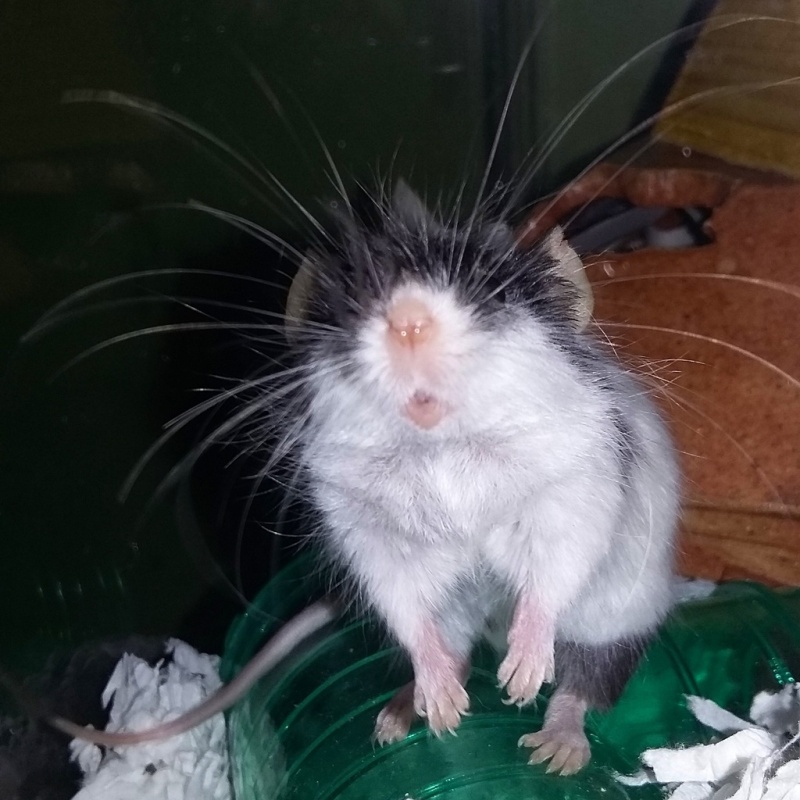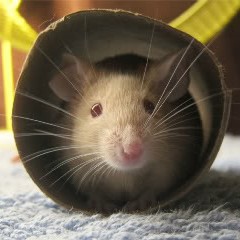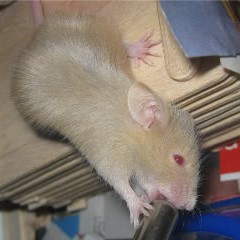Quarantine
Page 1 of 1
 Quarantine
Quarantine
| The content on this page was first published on The Fun Mouse website and has been reposted with permission. Please do not reproduce in any way. |
Quarantine: a state, period, or place of isolation in which people or animals that have arrived from elsewhere or been exposed to infectious or contagious disease are placed.
(Source: Oxford Languages)
Why Quarantine
Proper quarantine ensures that your resident mice are isolated from any diseases and parasites that outside mice, people, and products may carry. Within the 3+ week isolation period, you have a great chance at catching something before it is transferred to your mice, potentially saving many lives. Prompt veterinary assistance should always be sought if any illness or infestation is observed. It is impossible for me to express how profoundly important quarantining is and how many lives it can save.
What to Quarantine
Everything and everyone coming into your home or showing signs of disease should be quarantined before being introduced to your mice.
Any new mice coming into your home must be quarantined. New mice include mice from a breeder, mice from a pet store, mice from a shelter, etc. Even if they were said to be healthy, there may be a dormant illness or infestation that has not presented itself enough for even the most observant person to notice.
- Pre-existing mice in your mousery that have displayed any signs of parasites, illness, etc must be quarantined. Quarantine must continue for 3+ weeks *after* the problem has been completely resolved to ensure your mousery is clear.
- Any of your mice that leave your home and come back must be quarantined. This can include, yet is not limited to mice you have taken to the vet with plans to return home, mice you have taken to a show, swap, field trip, etc. Mice can pick up something from anywhere an animal is or has been. Therefore you must quarantine any mouse you intend to bring into your home, even if the mouse was originally from your home.
- Any person that has been in recent contact with mice or where mice have been must take procedures to ensure they are not transferring illness or parasites. This is very important if you have recently been to a pet shop. Pet shop mice are known for carrying illness and parasites. I recommend that, at the very least, you change clothes and wash up well before you come in contact with your mice after you have been exposed to other mice or where other mice have been, no matter where the other mice are (even breeder mice). Taking a shower is highly recommended as well as not coming in contact with your animals for at least a few hours after your exposure.
- Any product for your mice that you intend to bring into your home should be quarantined. These include any products that could have been in contact with mice (note that many stores, animal-related or not, have wild mice) and especially products from pet shops and feed mills. Wild mice can easily come in contact with bedding, food, and other products. Even products in bags usually have tiny holes where something can get in, later transferring to your mice. It is best that you freeze or bake anything that you intend to use with your mice.
How to Quarantine: Mice
All mice you intend to bring into your home must be kept separate from mice that you already have in your home. There are two ways to quarantine, which I will go into detail about below. No matter which method you use, you must also practice good Person and Product Quarantine in between quarantined animals and your pre-existing animals. Never share products between quarantined mice and pre-existing mice. If an outbreak happens among your pre-existing mice, they must be put through a quarantine period as well.
Both methods of quarantine should be carried out for a minimum of 3 weeks. In the quarantine period, animals should be thoroughly observed for any illness and/or parasites. If any signs of illness or parasites are seen, no animal may enter OR exit the quarantined area under any circumstances other than to see a vet, even if an animal doesn't show symptoms. Additionally, quarantine must be extended for 3+ weeks AFTER the situation has been resolved.
Most illnesses are spread by bodily fluid and NOT through the air. With that said, if the quarantined animals have any airborne illness, it can get to your existing animals via air ducts and through the air (under doors, etc) within a short distance or if airflow from one area to another is increased. Both on-site and off-site quarantine have their individual benefits, but they also have their individual risks. Only the caregiver can decide which method is right for their mice. Choosing not to quarantine is not an option.
Method 1, Off-Site Quarantine: Off-Site Quarantine is to be done in a very controlled building separate from any animals. It is best that you shed your clothes, take a shower, and wait a few hours between caring for the quarantined animals and your pre-existing animals. Once the off-site quarantine is complete (no animal shows and signs of illness or infestation), animals may enter your home. However, they still may NOT come in contact with your other animals but rather go through an in-house quarantine as well. Whenever animals are moved from one place to another, they MUST be quarantined, no matter where they came from. Animals can easily pick up illness and/or parasites from anywhere, even a controlled off-site quarantine facility. This is why it is critical to also quarantine animals coming from an off-site quarantine to your home or place where your mice reside.
Method 2, In-House Quarantine: In-House quarantine is to be done in an area of your home, as far away from your current animals as possible, and under great restriction for 3 or more weeks. It is preferred that you quarantine new animals behind a closed door and, if possible, on a separate floor of your home than your pre-existing mice. As with any quarantine practice, quarantined animals must be closely observed for illness and/or infestation during the quarantine period and quarantine must be extended/repeated if any animals show signs of illness or infestation. If any animals show any signs of illness or infestation, ALL animals in the house must be put under extended/additional quarantine, including pre-existing mice.
How to Quarantine: People
People can easily carry and transfer illness and/or parasites to your mice when they have been around an area with mice or around things that have potentially been exposed to mice. The best way to prevent spreading harmful things to your mice is to shower, and don't come in any contact with your mice or their belongings for several hours after exposure. It is also recommended that you do not let other people around your mice if they have potentially been exposed to illness, parasites, or any mice, rats, etc. They could easily transfer something to your mice with devastating results. Contrary to some belief, exposure does NOT build up your mouses' immune system. Exposure can easily kill your mice or cause devastation.
How to Quarantine: Products
To quarantine mouse bedding, freeze it at 0°F (-17°C) for 24 to 48 hours and/or bake it at 140°F (60°C) for 30 minutes in an oven with a shallow pan. Do note that you will need to bake bedding longer if you are baking larger quantities! The bedding needs to be heated all the way through for 30 minutes, not including preheating the oven or the bedding. It may take a while to get the core bedding temperature to the 140°F needed. Note that paper and wood will only combust without a naked flame in temperatures at or above 451°F (233°C). However, if it is exposed to a naked flame, it can catch fire extremely easily. Pet Mouse Fanciers recommends the freezing method and is not responsible for bedding fires. All products for mice can be frozen, yet not all products can be baked because of the risk of melting. Bleaching nonabsorbent items, such as tanks or plastic houses, is safe if you thoroughly rinse and dry completely before use. You should never bleach something that is absorbent. If you are unable to freeze, bake or bleach a product for any reason, it is recommended that you seal it in a bag for at least 3 weeks and then use it.
What to Observe During Quarantine
Only mouse-related observations are mentioned below as it is hard, if not impossible in most cases, to identify exposure risks on people and products. Note that animals, other than just humans, can carry risks to your mice. If any mouse displays any symptom below, contact a vet immediately. Diagnosis will determine if you need to completely re-start quarantine over again or not. The mouse who was taken to the vet must be quarantined away from all mice whether you need to re-start quarantine or not. Note that not all of the things on this list are quarantine violations (though most are). In addition to quarantine violations, the information below is also a list of general things that you should check all mice for.
Note that a seemingly healthy animal can carry illnesses, parasites, etc.
- Abnormal secretion from any area of the body. This includes, but is not limited to watery eyes, crusty eyes, runny nose, bleeding from any orifice, abnormal discharge from the genital areas, any secretion coming from the ears, etc.
- Ear mites, often looking like dirt inside the ears.
- Sneezing, wheezing, coughing, rattling in the lungs, labored breathing, etc.
- Any change in behavior/personality. This includes, but is not limited to suddenly becoming aggressive, suddenly becoming more friendly/lax, suddenly becoming lazy or listless, abnormal walking, limping, any sensitivity in any area that is touched, abnormal scratching, sudden increased or decreased water and/or food consumption, disorientation, etc.
- Abnormally rough or oily coat.
- Abrupt changes in weight (obviously this does not pertain to normal weight gain in pregnant mice).
- Hot spots and/or hair loss.
- Diarrhea, constipation, soft or discolored stools, discolored urine, and increased or decreased amount of urine/stool. (Note that bucks may mark their territory more when around unfamiliar smells. This is normal).
- Visible parasites such as lice, mites/mange, nits, fleas, etc.
- Head tilt, wry neck, waltzing, or abnormal circling of any kind.
- Change in odor.
- Signs of worms such as visible worms in the stool, hard and/or swollen stomach, etc.
- Any areas that are infected or could become infected. This includes, but is not limited to abscesses, scabs, scratches, and any other open wound.
- Any swelling of any part of the body (again, not including the abdomen of pregnant mice).
- Tumors and/or any abnormal bumps and lumps.
- Jaundice (seen easiest on gums and bare skin such as ears and tail).
- Malocclusion and simple malocclusion as well as any other abnormality in the mouth (sores, unusual lumps, etc).

AppleCheeks- Sr Member

- Join date : 2016-04-03
Posts : 123
 Similar topics
Similar topics» Quarantine after the vet?
» Help! I screwed up quarantine..
» A New Mouse + Quarantine
» i don't understand some things about quarantine?
» What is the minimum size for a quarantine cage?
» Help! I screwed up quarantine..
» A New Mouse + Quarantine
» i don't understand some things about quarantine?
» What is the minimum size for a quarantine cage?
Page 1 of 1
Permissions in this forum:
You cannot reply to topics in this forum|
|
|











